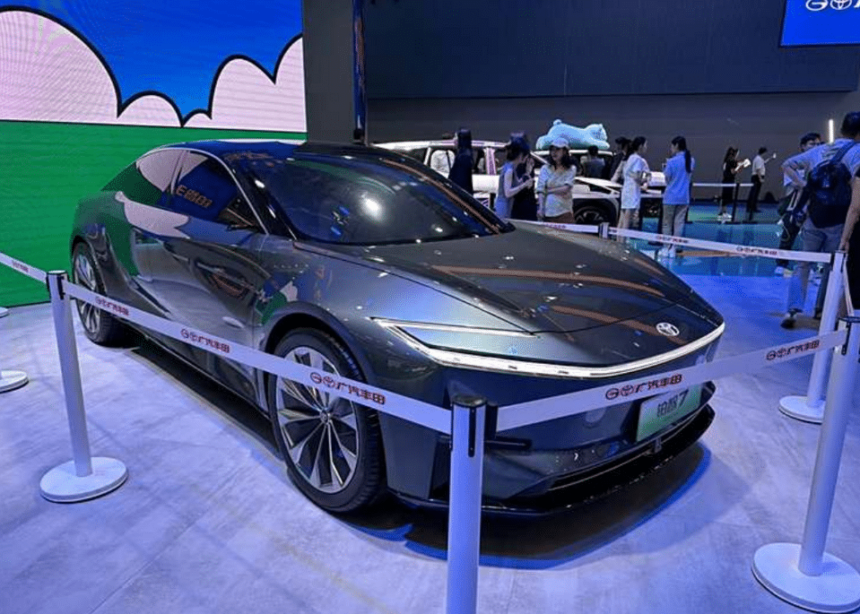Toyota unveiled a new concept car for its bZ range in China on November 15. The bZ7 concept is a pure electric C-class sedan that is expected to hit the market next year. It will compete with popular electric cars like the Xiaomi SU7, BYD Han, and Luxeed S7.
This new concept car is likely to be exclusive to the Chinese market. Toyota currently has only one fully electric car, the bZ4X, outside of China. However, the bZ range is expanding rapidly in China, starting with the bZ3 sedan.
Interestingly, the bZ7 concept bears a striking resemblance to the Comfortable Space Concept that was showcased at last year’s Guangzhou Auto Show. The car will be manufactured by the GAC Toyota joint venture and is anticipated to be available for purchase in 2025.
The bZ7 features a sleek coupe-like design with an enclosed face and through lights at the front. The rear of the car also boasts a through tail light arrangement.
Internally, the car is known as Project 630D. The GAC Group approved a proposal earlier this year for the GAC Toyota Project 630D, with a total investment of 1.588 billion yuan (218 million USD). It is believed that the bZ7, Comfortable Space, and Project 630D are all referring to the same vehicle.
The GAC Toyota joint venture currently sells the bZ3X and bZ4X, while the FAW Toyota joint venture offers the bZ3 and bZ4X. The bZ3C is expected to join the FAW lineup in the coming months. Both the bZ3X and bZ3C made their debut at the Beijing Auto Show and are set to launch next year.
Toyota’s electric offerings in China have relied heavily on BYD technology for the powertrain, utilizing BYD’s blade battery and electric motors. It is likely that the bZ7 will follow suit.
At the Guangzhou Auto Show, another Japanese automaker, Nissan, also unveiled an all-electric China-only model, the Nissan N7 sedan.
Overall, Toyota’s expansion in the electric vehicle market in China is evident with the introduction of the bZ7 concept. With a focus on innovation and sustainability, Toyota is gearing up to offer more electric options to meet the growing demand in the Chinese market.







